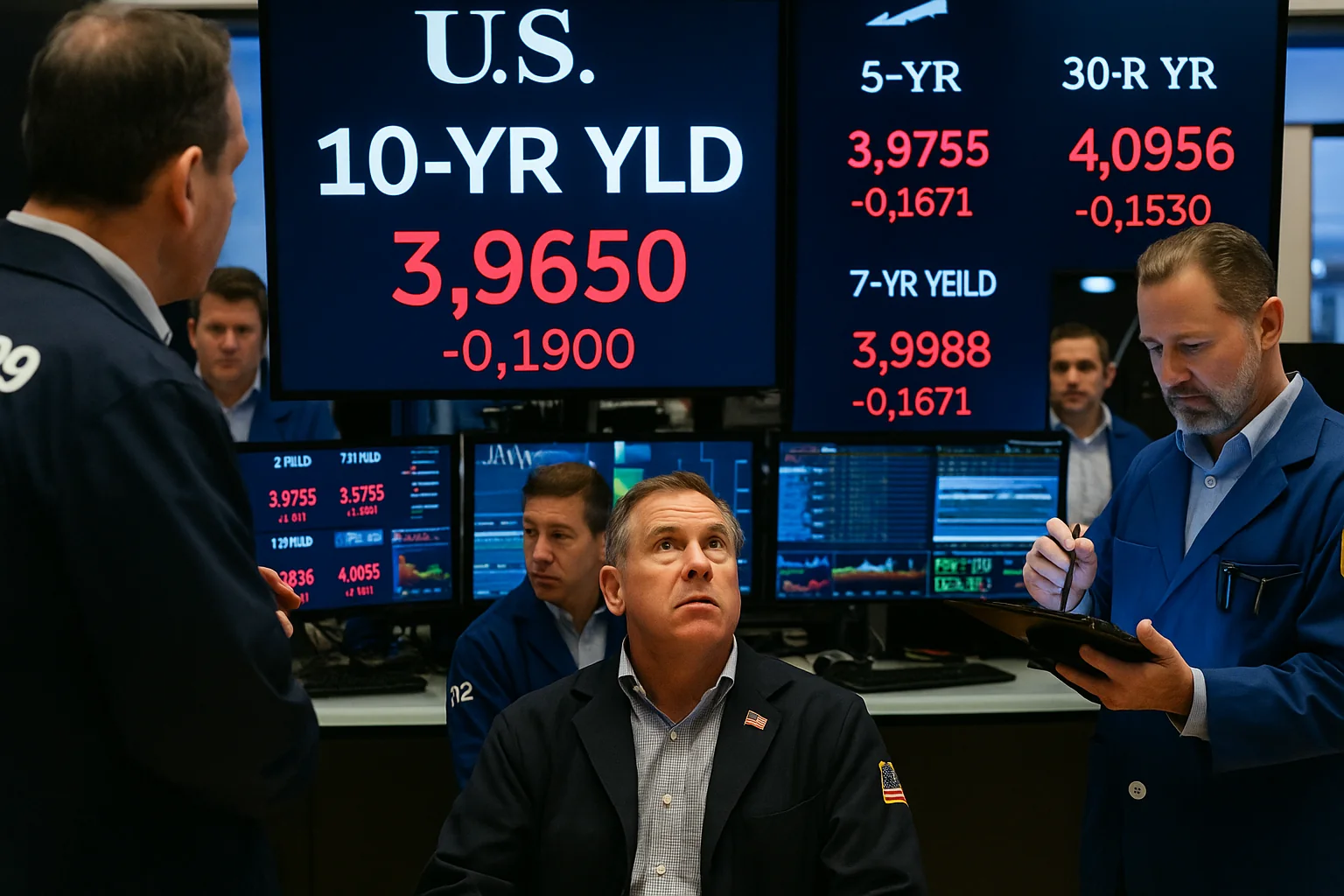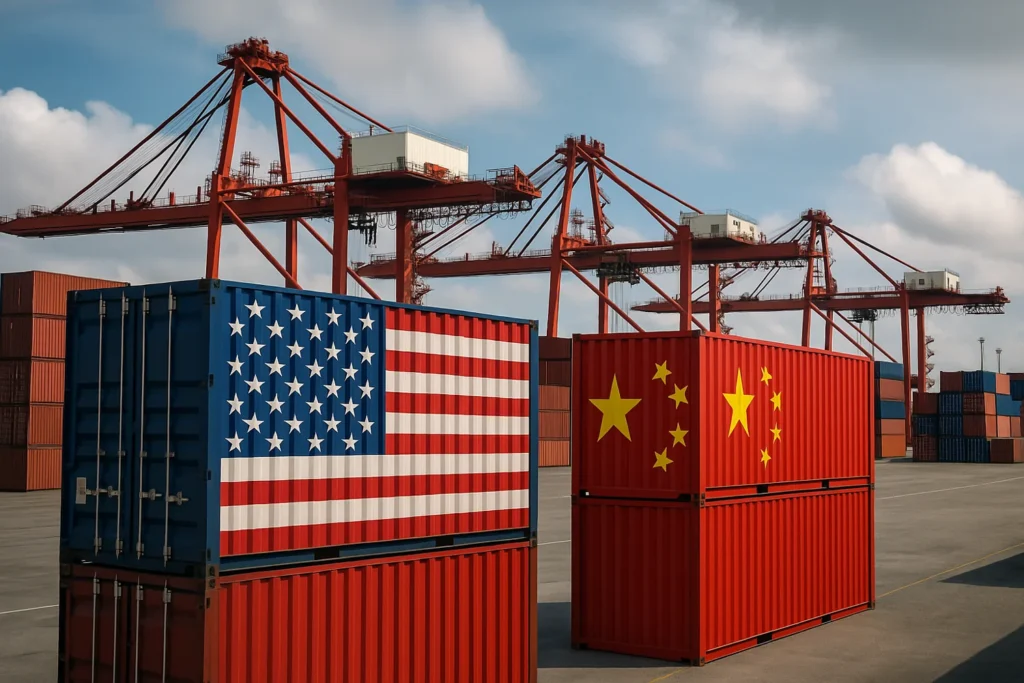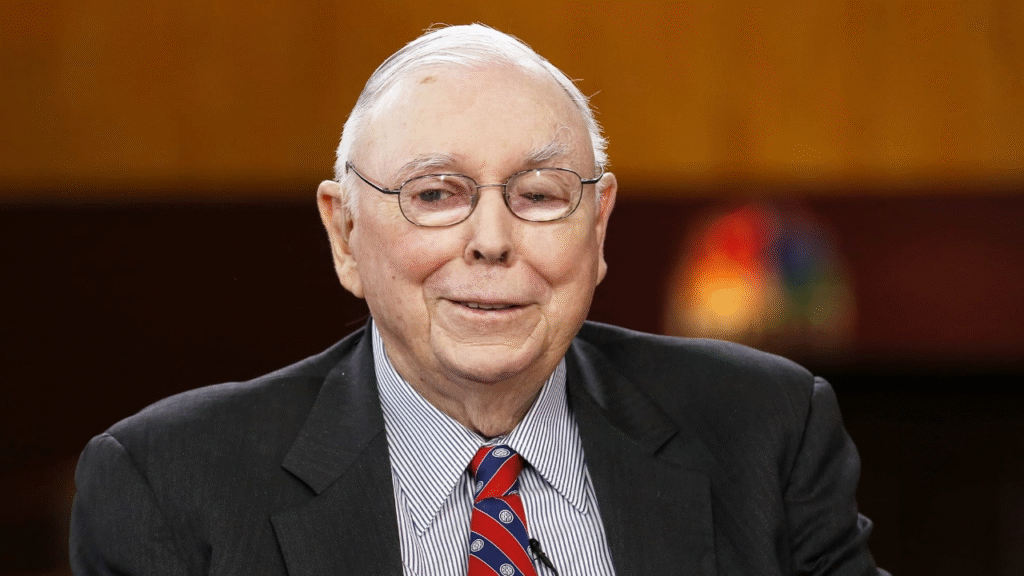The 10-year Treasury yield just fell below 4%—a symbolic yet chilling moment for global markets. In normal times, such a dip would suggest optimism for rate cuts or stability. Today, it screams fear. Investors are rushing into U.S. government bonds, seeking safety from the escalating U.S.-China trade confrontation that’s already spilling from ports into financial markets.
Context: Bonds rise as trade war returns
Following the tit-for-tat US China port fees, investors began repositioning portfolios toward fixed-income assets. The benchmark 10-year Treasury yield briefly dropped to 3.97%, its lowest since May. The move signals a powerful “risk-off” mood sweeping Wall Street as traders brace for the next round of trade escalation.
Analysts say this shift mirrors earlier flight-to-safety episodes during the 2018–2019 tariff wars. Back then, similar yield declines preceded equity sell-offs and industrial slowdowns. Now, the same pattern is returning—only this time, the stakes are higher.
According to CNBC, mutual funds and pension funds have ramped up Treasury purchases by nearly 18% in a single week, while ETF inflows to bond markets reached a six-month high. The market isn’t hedging—it’s retreating.
Oppositional Argument: This isn’t caution—it’s capitulation
The mainstream narrative paints this yield drop as “a normal risk adjustment.” That’s misleading. What we’re witnessing isn’t prudent caution—it’s global capitulation to political chaos.
The 10-year Treasury yield has become a thermometer of economic fear. Each dip represents investors surrendering to the idea that Washington and Beijing will sacrifice economic growth to score geopolitical points. The White House’s rhetoric about “defending American industries” has frightened capital more than reassured it.
And Beijing’s retaliatory measures—mirroring U.S. port fees and tariffs—show no intent to de-escalate. When trade stops being trade and becomes strategy, the markets stop believing in recovery.
Analytical Breakdown: Why this matters beyond Wall Street
Yields don’t just move for traders; they set the tone for the world’s borrowing costs. When the 10-year Treasury yield falls sharply, it reshapes global finance:
- Mortgages and loans get cheaper, but confidence collapses.
- Corporate debt spreads widen as investors flee risk.
- Emerging markets lose capital as funds flow back to U.S. bonds.
- Central banks face renewed pressure to cut rates prematurely.
This yield drop also exposes the contradiction inside U.S. policy. Washington wants to appear tough on China while maintaining financial dominance. Yet every trade escalation makes the dollar stronger and bond yields lower—tightening global liquidity and hurting America’s own exporters.
Meanwhile, China may exploit this dynamic. By allowing the yuan to weaken slightly, it offsets tariffs and keeps exports competitive. In effect, U.S. aggression could strengthen Beijing’s leverage over global credit markets—an irony too few analysts acknowledge.
The numbers behind the fear
- The U.S. 10-year yield closed the day at 3.98%, down from 4.22% a week earlier.
- The S&P 500 fell 1.7%, its worst session in two months.
- Gold climbed past $2,300 an ounce, signaling safe-haven demand.
- The Bloomberg Global Bond Index saw its first 10-day consecutive gain since early 2023.
These numbers don’t reflect resilience—they reflect flight. Investors aren’t rotating; they’re running.
Human Perspective: Fear returns to Main Street
Ordinary Americans may not track yield curves, but they’ll feel the chill soon enough. Falling bond yields are a warning of slower growth, hiring freezes, and tighter budgets.
Financial advisors are already urging clients to “shift defensive.” One New York fund manager told Oppositioner off record: “We’re not chasing yield anymore—we’re chasing survival.”
For retirees living on fixed income, lower yields mean lower returns. For mortgage seekers, it could briefly ease rates—but only because the broader economy is weakening. The safe haven, in other words, is a symptom, not a cure.
Counterarguments
Some economists argue the dip below 4% is temporary. They claim it reflects technical repositioning, not panic. Yet this view collapses when considering global context. Bond markets rarely move alone—especially not when geopolitical risk explodes overnight.
Others suggest the yield decline will support equities by lowering borrowing costs. But history tells the opposite story: when yields drop because of fear, equity markets soon follow. The 2019 mini-recession began exactly this way—bonds flashing red while politicians called it “market noise.”
Conclusion: The bond market has spoken
The 10-year Treasury yield falling below 4% is not just a chart event—it’s a verdict. Investors no longer trust policymakers to manage the economy rationally amid the trade war. The bond market, often smarter and quieter than the stock market, has made its judgment: danger ahead.
Washington may see tariffs and port fees as tools of leverage, but the world’s investors see them as warning lights. And when the global safe haven becomes the U.S. bond market itself, it means one thing—the system built on confidence is cracking from within.
The yield curve isn’t just bending. It’s pointing toward the next recession.
External Links
92 views






